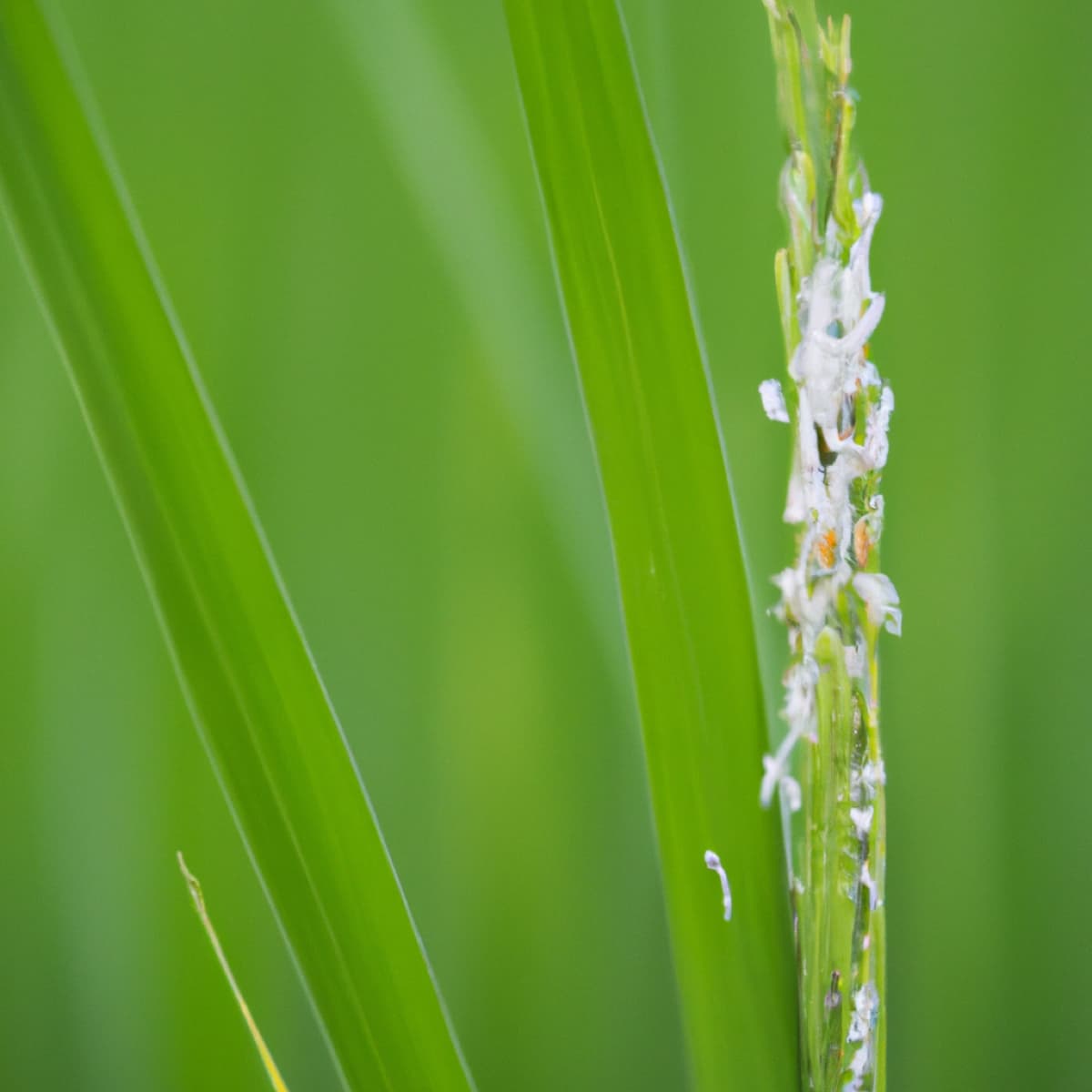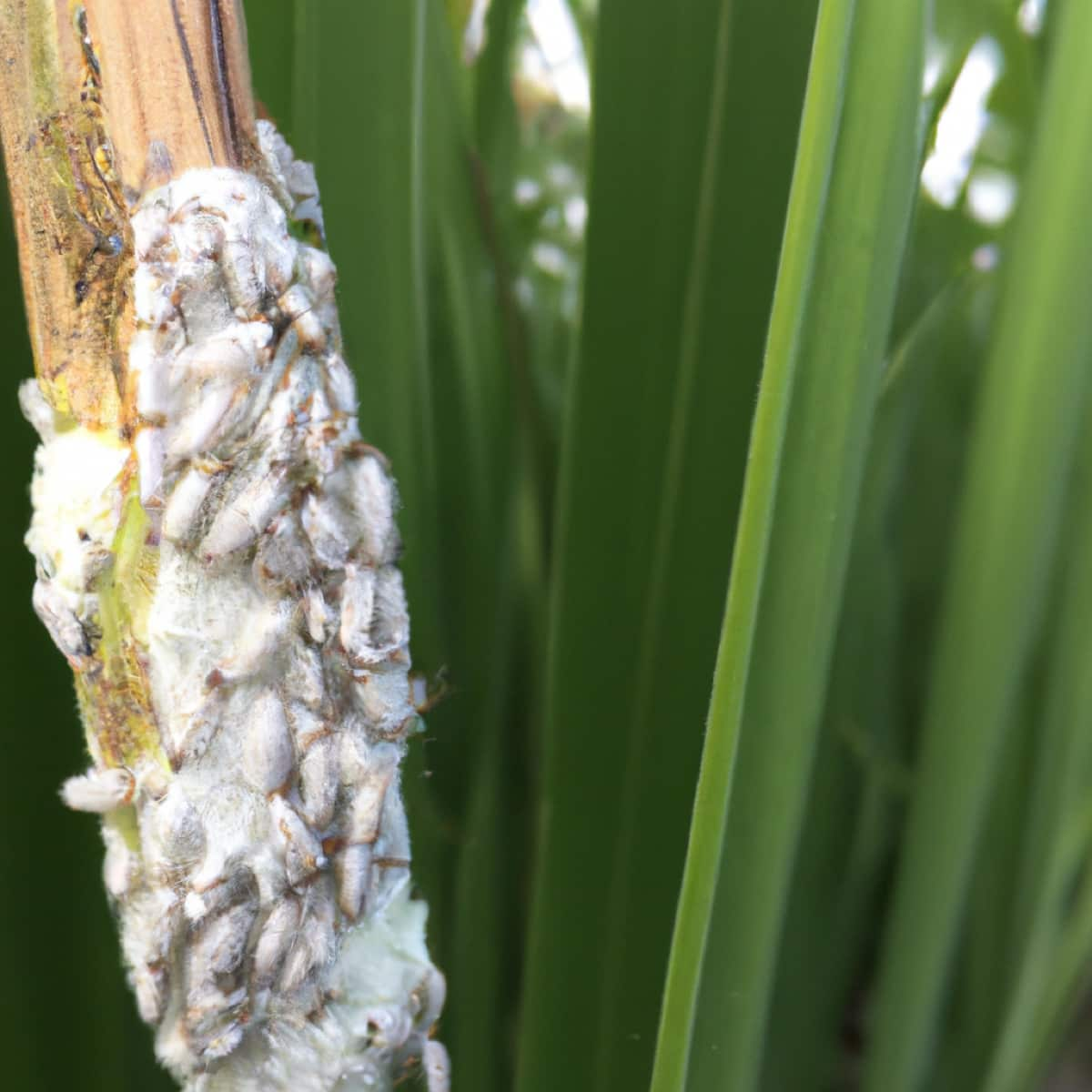Mealybugs are wax-covered soft oval insects that feed on plant sap in rice crops. These mealybugs cause damage to plants all over the world in humid and warm climates. Mealybugs, which feed on plant sap, cause harm to a wide variety of agronomic and vegetable crops, fruit crops, and ornamentals. Usually found in groups, They are piercing-sucking insects that are closely related to soft scales but lack scale coverings.

They, like soft scales, may generate a lot of honeydew and are frequently connected with black sooty mold. Paddy, generally known as rice, is a major crop farmed for human use in many places. The rice crop is used for many purposes, including human and livestock feed and the creation of beer, vinegar, and sake.
Mealybug management in Paddy
The life cycle of the Mealybug
Females deposit 300 to 500 eggs in 5 to 10 days. Females die after depositing their eggs. Because their life cycle is temperature dependent, it takes them around 90 days to mature from egg to adult at 18 °C/ 64 °F and 30 days at 30 °C/ 86 °F. Mealybugs go through three nymphal stages. Only the males complete the transition into winged adults.
Causes of Mealybug population growth in the field
- The Mealybug’s eggs are also deposited in the soil. Nymphs and adults can crawl to nearby plants after hatching. Wind, ants, animals, birds, or even simple farming tasks like trimming or harvesting can distribute them long distances.
- Warm temperatures and dry conditions promote their life cycle and the severity of their symptoms.
- They have a variety of alternate hosts, including tomato, brinjal, and sweet potato, as well as several weeds.
Identification characters of Mealybug in Rice field
- Eggs are laid in a pouch that looks like cotton.
- The young nymphs, which are mobile, spread out to find places to suck the sap from plant parts.
- Male bugs are small and aren’t often seen in the crop.
- The females have white, waxy threads all over them. They look like grown-up nymphs.
- Females and young live in groups in safe places like the axils of leaves and under loose bark.
Damage symptoms of Mealybug in Rice field
- White cotton-like masses appear on plants and are made of flocks of bugs.
- Infestations can cause yellowing and curling of leaves, stunted growth, and No grain filling.
- The bugs excrete honeydew, making the plant tissues sticky and prone to bacteria and fungi.
- The honeydew may attract ants and spread the pest to other plants.
- Older leaves are less likely to become deformed or distorted.
In case you missed it: Leaf Folder Management in Paddy: Symptoms, Treatment, Chemical, Biological, Natural, and Organic Control

Percentage of yield loss due to Mealybug in Paddy crop
From April to early July, the Mealy bug is in abundance. During this time, two generations are accomplished in the life cycle. They cause severe damage to crops as Adult and nymph mealybugs both suck plant sap. It causes the leaves to curl and the plants to wilt. Rice mealybug causes significant agricultural losses in Bangladesh, India, and Thailand. Plants can wilt and perish when pest density is high (more than 100 mealybugs/hill).
When Mealybugs begin to cause damage in a Paddy field
They feed by directly inserting their mouthparts into the plant and drawing nutrients from the sap. Mealybugs wax the stems and leaf nodes white and fluffy. They sticky leaves, stems, and fruit by sucking plant sap and excreting honeydew. Sooty mold on honeydew blackens the surface, reducing photosynthesis. Plants wilt from severe infestations.
Cultural control of Mealybug
- During the major field preparation before transplanting, the grasses should be removed, and the bunds should be trimmed.
- Eliminate and dispose of the plants that are infected.
- When monitoring winged males, you may rely on certain pheromone traps in conjunction with a trap like the Delta or sticky traps like the Bug-Scan®. Both of these are effective in managing the pest.
Biological control of Mealybug
- Ladybird beetles, lacewings, and wasp parasites are biological control agents for mealybugs.
- Wasps are highly migratory and excellent in reducing mealybug populations.
- Ladybird beetles can clean up mealybug infestations, but they require a large population to establish.
- Lacewings are general predators that feed on mealybugs and other pests like aphids and thrips.
- Encouraging these helpful insects can aid in the control of mealybug populations.
- In the rice field, augment biocontrol agents such as coccinellids and spiders.
Chemical control of Mealybug
- Mealybugs may be controlled by foliar sprays with solutions based on imidacloprid, acetamiprid, and chlorpyrifos.
- Spray any one of the following chemicals to control mealy bug in paddy crops 25 SC of buprofezin at 320 ml per acre, 20 WDG @ 40 g/acre of thiamethoxam
- And the combination of Dimethoate (30 EC) 400 ml and Azardiractin 1000PPM is recommended for effective management.
- Mealybugs are hard to treat because their waxy layers and fibers protect them from bad weather and other environmental conditions.
- Synthetic pesticides don’t work as well on mealybugs because they adapt to resistance quickly.
In case you missed it: Thrips Management in Paddy: Symptoms, Treatment, Chemical, Biological, Natural, and Organic Control

Organic/natural control of Mealybug
- Grease the colonies of mealybugs with a cotton bud drenched with oil or spirit at the first indication of a minor infestation.
- Insecticidal soap can be sprayed on plants. To inhibit the expansion of the population, nearby plants should be treated with neem oil or pyrethrins.
- Green lacewings, parasitoid wasps, hoverflies, ladybird beetles, mealybug destroyers, and the predator butterfly Spalgis epius are all-natural enemies.
Preventive measures for control of Mealybug
- Remove weeds from the Rice Field and surrounding bunds.
- Other sensitive crops should not be grown in the vicinity.
- Use healthy plant seeds or transplants from recognized sources.
- Regularly inspect the Field for indications of the bug.
- Plants or plant components that are infected should be removed and destroyed.
- By using effective field techniques, you may increase the predator population.
- Adapt to a balanced and appropriate fertilization schedule.
Conclusion
Mealybugs in rice fields must be managed by recognizing symptoms such as yellowing, leaf curling, and stunted development. Physically eliminating insects, utilizing high-pressure water spray, and lowering nitrogen fertilizer are all treatments. Methods such as releasing beneficial insects, which are chemical, biological, natural, and organic, can also be useful. A combination of these measures can aid in the management of mealybug populations.
- Beneficial Insects in Pest Management
- Natural Solutions for Pest Control in Flower Gardens
- Types of Fungicides Used in Agriculture
- Common Issues in the Fruit Development Stage of Pomegranate Farming
- Fruit Development Issues in Papaya: Easy Solutions and Treatment
- Soil-Borne Diseases and How to Protect Your Plants
- Practices to Prevent Disease Spread in the Garden
- From Wilted to Thriving: How to Treat Root Rot Naturally in Houseplants
- Natural Remedies to Cure Brown Spots on Fig Tree Leaves